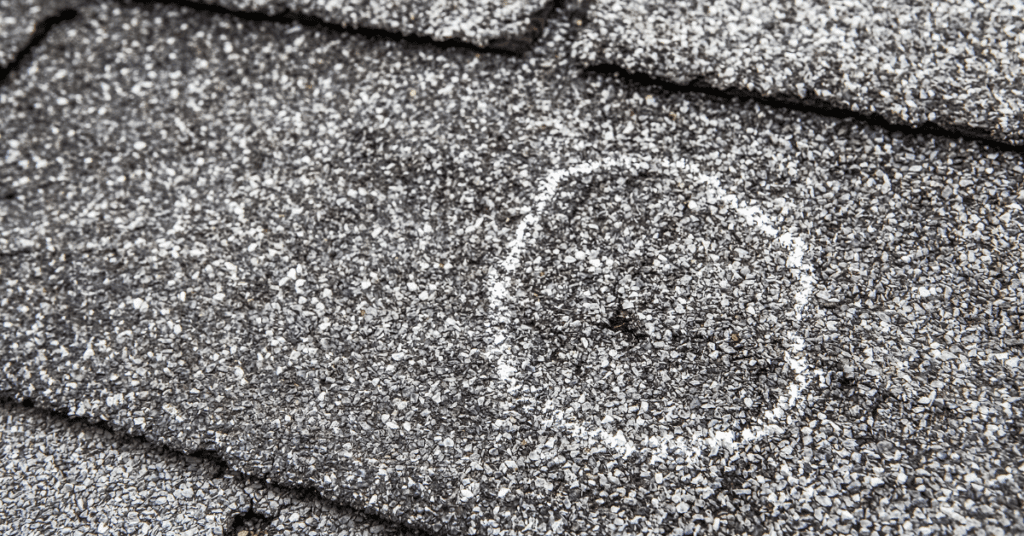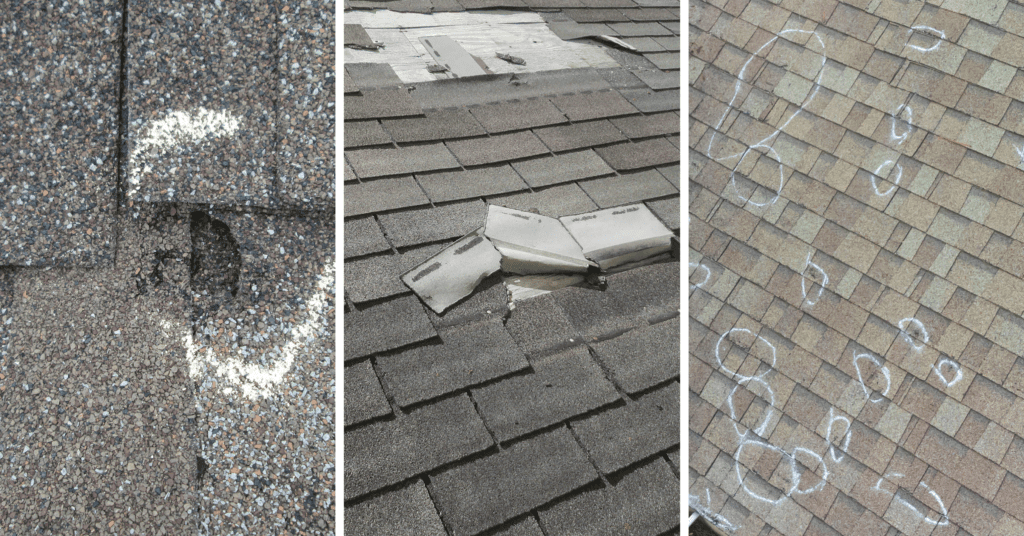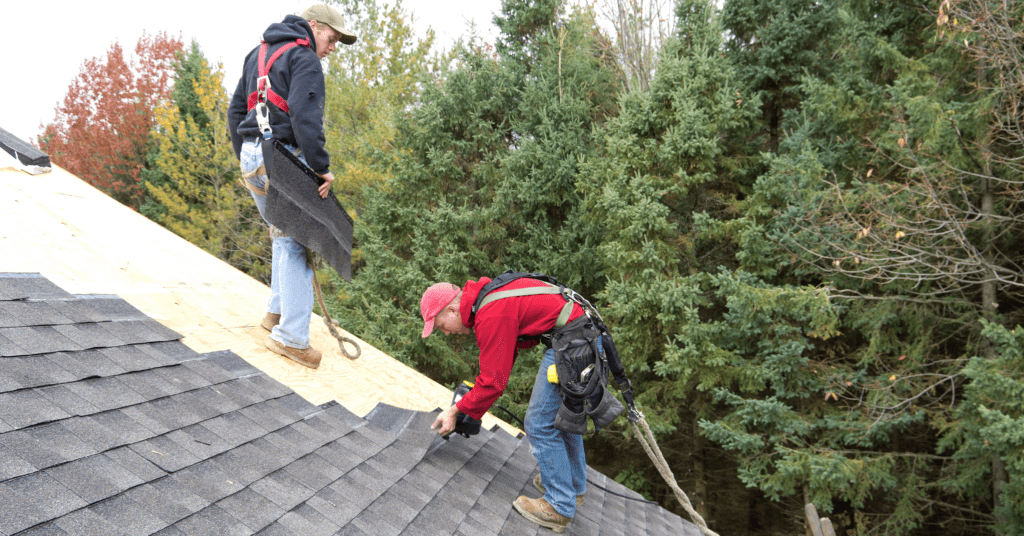How to Inspect Your Roof for Hail Damage


Roof damage from hail can be a serious issue, and it’s important to have your roof inspected for any signs of damage after a hailstorm. It’s not always easy to identify hail damage, as different types of shingles can react differently when struck by hail.
In this article, we will discuss the common signs of hail damage, the tools and materials used by roofers to inspect your roof, safety precautions to take, how roofers approach inspecting a steep or hard-to-reach area, how to identify hail damage versus other types of damage, and where to find trained and experienced roofers. So, let’s dive in!
What Are the Common Signs of Hail Damage on My Roof?
To properly identify hail damage on your roof, you need to know the different effects that it can have on different types of shingles. Here are the common signs of hail damage on asphalt and composition shingles:
- Random damage with no distinguishable pattern.
- Hail hits that are black in colour.
- Loss of granules which are the exterior coating on asphalt roofing shingles which gives your roof an extra layer of protection, which may expose the roof felt.
- Asphalt and/or mat that appears shiny.
- Hail hits that are soft to the touch, like a bruise on an apple.


For wood shingles, the signs of hail damage are slightly different:
- Random damage with no distinguishable pattern.
- A split in the wood shingle that is brown/orange in colour.
- A split in the wood shingle that has sharp corners and edges.
- A split in the wood shingle that has little to no deterioration at the edges.
- Impact marks or dents along the splits.
Keep in mind that these are just general signs of hail damage, and it’s always best to consult with a professional roofer for a more accurate assessment. To properly understand hail damage and other aspects of roofing, it’s beneficial to familiarize yourself with essential roofing terms that professionals use.
How Is Hail Damage Versus Other Roof Damage?
It’s important to differentiate hail damage from other types of roof damage. Hail damage can often be mistaken for normal wear and tear or other types of damage caused by weather conditions. Here are a few things to keep in mind:
Weathering
Exposure to inclement weather and sunlight can make shingles brittle and give them an aged appearance. This type of damage is considered normal wear and tear, not hail damage.
Other Types of Damage
Blistering, cracking, granule loss, flaking, and algae are other types of damage that can be mistaken for hail damage. Manufacturing defects and mechanical imperfections in shingles can also be misidentified as hail damage. While identifying hail damage, it’s also crucial to understand other damages, such as wind damage. Explore some common misconceptions about wind damage on roofs to ensure accurate identification.
Consult a Professional
If you suspect hail damage, it’s best to consult with a professional roofer or your insurance representative to get an accurate assessment. Distinguishing between different types of roof damage can be a challenge. Understand why it’s difficult to locate a roof leak on your own to ensure accurate assessments.
What Tools and Materials Are Used to Inspect Roofs for Hail Damage?
Roof inspection for hail damage requires a few essential tools and materials. Here is a list of eight tools that roofers commonly use:
- Tape Measure: Always have a tape measure on hand to document measurements. This can be valuable when submitting an insurance claim or if the job requires a supplement.
- Chalk: Use chalk to mark up hail strikes and other damage on the roof. It is critical for performing test squares and providing documentation for supplements.
- Camera: Take photos of the hail damage for documentation purposes. This can also help you communicate with your insurance company or roofing contractor.
- Ladder: A sturdy ladder is necessary to access your roof safely. Make sure to follow ladder safety guidelines and roofers use caution when climbing.
- Flashlight: Use a flashlight to inspect dark or hard-to-reach areas on your roof. It will help you spot any hidden damage.
- Safety Gear: Wear appropriate safety gear, such as gloves and non-slip shoes, to protect yourself while inspecting your roof.
- Binoculars: Binoculars can be useful for inspecting steep or hard-to-reach areas from the ground.
- Protective Covering: Use a tarp or sheet to protect your roof from further damage during the inspection.
How Do You Approach Inspecting a Particularly Steep Roof or a Hard-To-Reach Area?


Inspecting a steep or hard-to-reach roof area can be challenging, and it’s best to leave it to the professionals. Hiring an experienced roofing company like us at Vantage Roofing Ltd. is a smart choice. We have the necessary expertise and safety equipment to access and inspect difficult areas on your roof. Remember, your safety should always come first. Safety is paramount when inspecting difficult roof areas. Learn more about ensuring proper safety measures during roofing projects for a comprehensive understanding.
In conclusion, inspecting your roof for hail damage is essential after a hailstorm. By knowing the common signs of hail damage, the use of specific tools, and seeking the expertise of trained and experienced roofers is a prudent step in dealing with hail damage. Remember, timely inspection and repairs can prevent further damage and extend the lifespan of your roof. Stay proactive and protect your investment! After inspecting your roof for hail damage, it’s crucial to take proactive steps if any issues are identified. Check out these 7 steps to take when roof damage is detected to guide your next actions.
Whether you’re dealing with hail damage or seeking general roofing services, our dedicated team of experts is here to help in cities all across the region. From the trusted Burnaby Roofers, to our skilled team of New Westminster Roofers, we’ve established a strong reputation for quality work and customer satisfaction. Residents in Coquitlam, Port Coquitlam, Port Moody , Delta, Ladner, Vancouver, North Vancouver, West Vancouver, Richmond, Surrey, White Rock, Maple Ridge, Pitt Meadows, and Langley can count on us for timely, efficient, and top-notch roofing services. Don’t wait for minor damages to become major headaches. Contact your local roofer from our extensive network today and ensure your home is protected from the elements!
